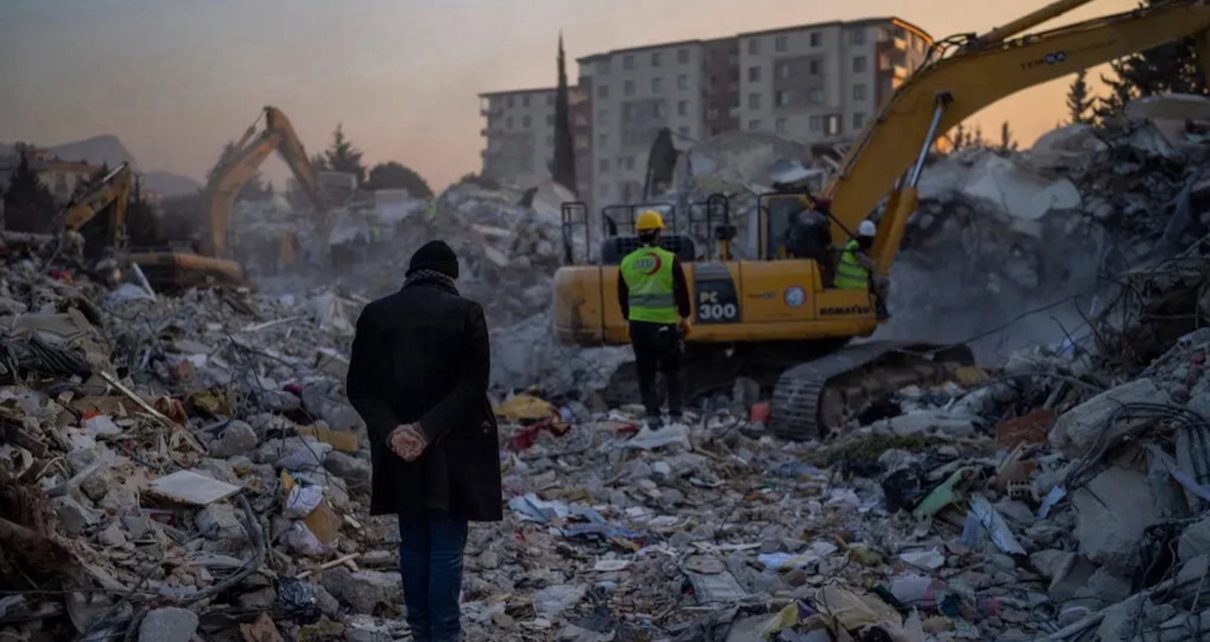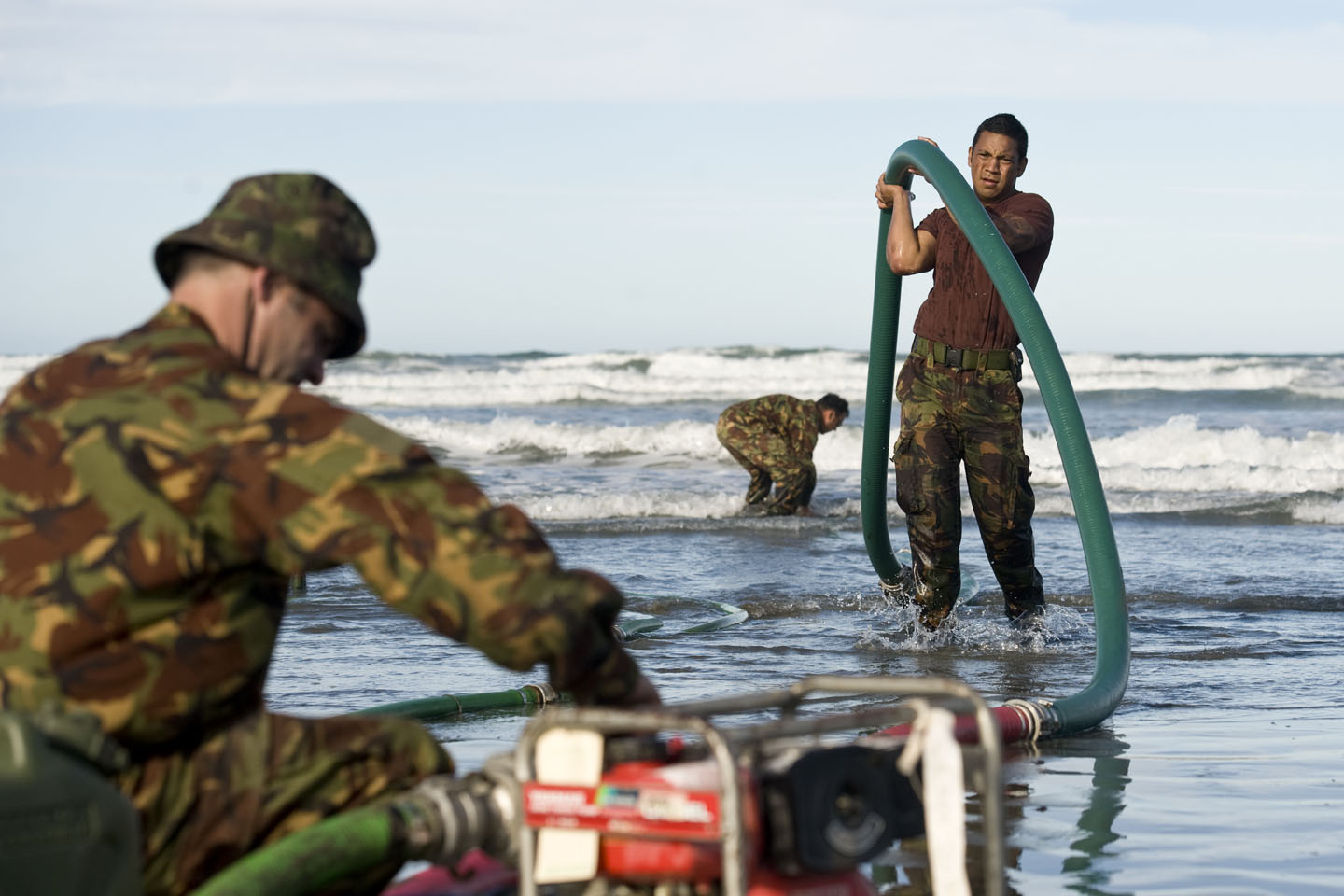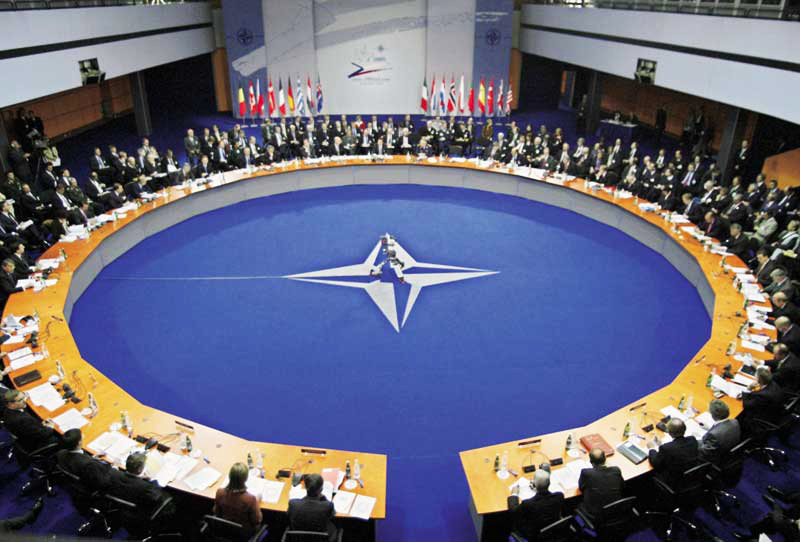The idea of military participation in responses to natural disasters is not new. Canadian and other militaries have often played a role in responding to natural disasters in Canada and abroad. However, the increase in the frequency and impact of natural disasters in the context of climate changes requires a new, bold response. The concept of Green Helmets has recently emerged as an option.
In 2013, the Canadian Department of National Defence undertook an Evaluation of the DND contributions to Humanitarian Operations (HO), Disaster Relief Operations (DRO) and Non-combat Evacuation Operations (NEO). The evaluation makes an assessment of Canadian Forces deployments both in Canada at the request of provinces and territories, and internationally. In the later cases, the Disaster Assistance Response Team (DART) is sent to provide assistance. The overall assessment of the evaluation was that, “The DND program for HO, DRO and NEO is well aligned with the role and responsibilities of the DND. The evaluation found the program performance to be very effective and well perceived by all partner organizations” (Executive Summary, p. iii).
In terms of relevance, the evaluation concludes that, “Multiple lines of evidence indicate that the involvement of DND in these types of operations continues to address a demonstrable need and is responsive to the expectations of Canadians. Usage of DND assets continues to be requested to provide support to overwhelmed primary first responders and provide unique capabilities that requesting organizations cannot provide” (ES, p. iii). The evaluators also indicate that, “The program fulfills national obligations under international law, principles and agreements. In Canada, provinces and territories have the constitutional authority to provide the first response in an emergency, but the Emergency Management Act and Federal Policy of Emergency Management (2009) establish a government-wide mandate for all federal departments and agencies (including DND) to develop and coordinate programs that provide support to disaster assistance activities” (ES, p. iv).
The evaluation goes on to observe, “The program aligns with federal government priorities and departmental strategic outcomes. This includes ensuring a safe and secure world through international engagement and the promotion of Canadian values. The program objectives directly support the priority of emergencies preparedness and the protection of the personal safety of Canadians both domestically and internationally… Multiple lines of evidence indicate that the performance of HO, DRO and NEO by DND is presently very good. The program has contributed to the saving of lives and the alleviation of suffering, while gaining public confidence and promoting a positive image of Canada.” The evaluation found that DND is using appropriate, efficient and economical means to achieve expected outcomes (ES, p. iv).
In 2019, Global Affairs Canada undertook an evaluation of its International Humanitarian Assistance Program (IHA) for the period 2011-12 to 2017-18, which mentions the role of the Department of National Defence through DART (Disaster Assistance Response Team). During that period, Canada invested $5 billion in IHA, which accounted for approximately 15 % of overall Canadian development assistance (ODA). Among the findings, we can underscore a reference to DART: “IHA had robust procedures to coordinate civil-military response to natural disasters and led a whole-of-government approach to address several large crises” (p. 13). The report also mentions “The Interdepartmental Taskforce, Canadian Disaster Assessment Team, Disaster Assistance Response Team and military assets generally functioned well as effective Canadian disaster coordination tools” (p.22).
Between 1994 and 2015, the Petawawa-located force made eight humanitarian interventions in various parts of the world affected by human-generated and natural disasters (Rwanda-civil war, Honduras-Hurricane Mitch, Northern Turkey-earthquake, Sri-Lanka-Tsunami, Pakistan-earthquake, Haiti-earthquake, Philippines-typhon, Nepal-earthquake). The last mission of DART was in 2015.
Given such positive findings, it is surprising that Global Affairs Canada has not pursued and expanded this approach. In 2022-23, a very minor part of Canadian ODA was appropriated to the Department of National Defence for humanitarian assistance ($8.74 million: See the report to Parliament).
My proposal is to revamp DART and promote the idea of a United Nations coordination body, the Green Helmets, parallel to the Blue Helmets, which undertake peace-keeping missions, to assist countries facing natural disasters. This is consistent with broader Allied goals. In a recent report NATO stated: “Climate change is one of the defining challenges of our times. It is a threat multiplier that impacts Allied security, both in the Euro-Atlantic area and in the Alliance’s broader neighbourhood.”
Creating the Green Helmets would involve investing in information and communication technologies (ICT), providing training to thousands of Canadian military personnel regarding the best approaches to address the most frequent natural disasters in Canada, procuring the appropriate equipment, and positioning emergency centers where they can best respond to emergencies.
Furthermore, an International Unit for Climate Mediation (IUCM) could be established, given potential cross-border litigations in the context of natural disasters. The IUCM would include highly experienced mediators who are familiarwith international climate issues. These experts – neutral third parties – would work and travel in real time to complete thenegotiations.
Many contingencies favour this approach:
- The increasing quantity and impact of natural disasters in Canada and the world.
- NATO recognizes that climate changes is a challenge that all member countries are facing.
- The proven capacity of the Department of National Defence to contribute effectively to national and international humanitarian assistance.
- The requirement for Canada to comply with the target of 2% of GDP in national defence and the 0.7% in development assistance.
We may underscore that the NATO definition already includes humanitarian and disaster relief spending in the defence spending tally: “Expenditure for peacekeeping and humanitarian operations, paid by the Ministry of Defense or other ministries, the destruction of weapons, equipment and ammunition, and the costs associated with inspection and control of equipment destruction are included in defense expenditure.”
In order to define more precisely the Green Helmets Initiative (GHI), various papers have been issued, including a Concept Paper[i] which presents the overall idea and approach, a Technical Note (1) which details the international dimensions of the initiative, and a Technical Note (2) which details the national-domestic considerations.[ii]
I will present the case for the Green Helmets Initiative to the Civil Military Centre of Excellence (CCOE) in The Haag, May 14-15, 2025. In the coming weeks, a more detailed report will be provided to the NATO Association of Canada for publication.
The author has a PhD in Social Sciences from the EHESS of Paris. He worked for 27 years at the Canadian International Development Agency (1985-2012), six years for the OAS (2012-2018), and recently he has provided quality assurance of evaluation products for the World Food Programme and UNICEF (2018-2024).
Judge Louise Otis is a Canadian and international active judge, arbitrator and mediator in administrative and commercial matters. She is President of the Administrative Tribunal of the Organization for Economic Co-operation and Development (OECD). She is President of the Administrative Tribunal of the Organization Treaty of Atlantic North (NATO).
Photo: A man walks among the ruins in the aftermath of the 2023 Turkish earthquake in Ankara (2023), via Free Malaysia Today. Public Domain.
Disclaimer: Any views or opinions expressed in articles are solely those of the authors and do not necessarily represent the views of the NATO Association of Canada.
[i] The Green Helmets Initiative: The International Dimensions, by Dr. Rémy-Claude Beaulieu, Gatineau, Canada, 6 pages.
[ii] The Green Helmets Initiative: The National Dimensions, by Dr. Rémy-Claude Beaulieu, 8 pages.




